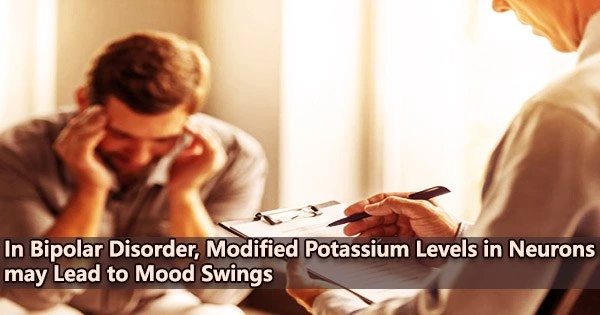Dramatic mood swings are common in people with bipolar disorder, who alternate between frequently crippling episodes of mania and sadness. Lithium can be used to treat a third of bipolar disorder sufferers, however, the majority of patients have trouble finding effective treatments.
Researchers at Salk have recently discovered previously unknown information that explains why particular neurons in bipolar patients alternately become overexcited and under-excited.
In two papers published in the journal Biological Psychiatry in February 2020 and October 2019, Salk researchers used experimental and computational techniques to describe how variations in potassium and sodium currents in the brain cells of people with bipolar disorder may help to further explain why some patients respond to lithium and others do not.
“This is exciting progress toward understanding the cellular mechanisms that cause bipolar disorder,” says Salk Professor Rusty Gage, the study’s senior author, and president of the Institute. “It also brings us one step closer to being able to develop new therapeutics to treat the disorder.”
In 2015, Gage and his colleagues discovered for the first time the initial differences between brain cells of patients who respond to lithium and those who don’t. In all instances, hyperexcitable neurons from the dentate gyrus (DG) region of the brain responded to stimulation more readily than DG neurons from individuals without bipolar disorder. However, only cells from proven lithium responders were calmed by the medication when exposed to it.
Similar trials were performed in the new study by Gage’s team, but they used deeper probes and a different kind of neuron because they were interested in seeing if the findings were consistent across different brain regions. They grew the neurons called CA3 pyramidal neurons from six people with bipolar disorder, three of whom responded to lithium.
This is exciting progress toward understanding the cellular mechanisms that cause bipolar disorder. It also brings us one step closer to being able to develop new therapeutics to treat the disorder.
Professor Rusty Gage
Only CA3 neurons from lithium responders were hyperexcitable continuously in the new study, in contrast to prior investigations where DG neurons from all bipolar patients were hyperexcitable.
“The neurons were very different between responders and non-responders,” says Salk research associate Shani Stern, first author of both papers. “It’s almost as if it’s two different diseases.”
When the scientists looked more closely at the CA3 neurons from lithium responders, they discovered that these cells had more potassium channels than typical and stronger potassium currents flowing through them.
The increased potassium currents, the scientists showed, were responsible for the hyperactivity of the CA3 neurons: when they exposed the cells to a potassium channel blocker, the hyperactivity disappeared. It’s interesting to note that when the cells were exposed to lithium, the medication simultaneously decreased potassium currents while also reversing the hyperactivity.
The scientists also found that the average excitability of the CA3 neurons from lithium non-responders was within normal limits at first. But when they looked more closely at individual cells over time, they found a different story.
“There were days I’d measure the cells and the whole group would be hyperexcitable, and other days they’d all be hypoexcitable,” says Stern. “And then there were times when the cells would be split; some would be very hyperexcitable and others very hypoexcitable.”
The researchers created a computational simulation of CA3 neuron activity to better understand what was driving these variations. The computer simulation demonstrated that both hyperexcitability and hypoexcitability in CA3 neurons could be explained by the same type of neuronal instability caused by sharp decreases in sodium currents and an increase in the amplitude of potassium currents.
When the researchers then exposed CA3 neurons from non-responders to potassium channel blockers, their excitability became closer to control levels. The results backed up the theory that potassium currents contribute to bipolar disorder in both lithium responders and non-responders and can inform medication development.
To determine if these variations may be responsible for the manic and depressive moods seen in bipolar disorder, the team is preparing additional investigations on what occurs to massive networks of neurons when they alternate between hyperexcitable and hypoexcitable phases.
Other researchers on the papers were Anindita Sarkar, Dekel Galor, Tchelet Stern, Arianna Mei, Yam Stern, Ana P. D. Mendes, Lynne Randolph-Moore, Renata Santos, Maria C. Marchetto, Gabriela Goldberg, Thao Nguyen and Yongsung Kim of Salk; Guy Rouleau of the McGill University; Anne Bang of Sanford Burnham Prebys Medical Discovery Institute; and Martin Alda of Dalhousie University.
The National Cancer Institute, the National Institutes of Health, the National Cooperative Reprogrammed Cell Research Groups, the Leona M. and Harry B. Helmsley Charitable Trust, the JPB Foundation, Annette C. Merle-Smith, the Robert and Mary Jane Engman Foundation and the Canadian Institutes of Health supported the work and researchers involved.





